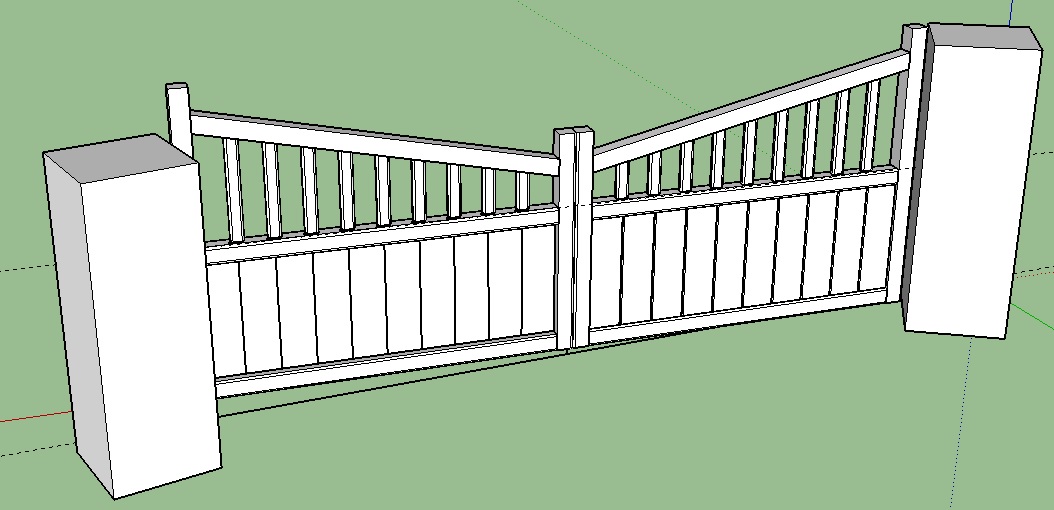paulrockliffe
Established Member
I'm after a bit of help with some gates I'm designing. I've bashed out a first draft, but wanted to get some advice on construction and also on a drop across the gates:
 Gates 1 by Paul Rockliffe, on Flickr
Gates 1 by Paul Rockliffe, on Flickr
Each gate is roughly 1.5m wide, the frame is 3" x 3", with 1" thick boards to fill in between the frames. All morticed and tenoned, then glued. Is this the best way to do this or should it be pegged too? Or something completely different?
General critique of the design very much appreciated, does it work structurally, is there a better way to do it, how do I accommodate wood movement etc?
There's a 17cm drop over the 3m width of the drive and, there's also a similar difference in the height of the posts. How would you design this? It feels like to much to take up with a tapered lower bar and that would mean either different angles for the sloping rail, or one gate sitting lower against the post. I don't want to cut all the mortices and tenons at an angle, but I also don't want a fudge that draws attention to the drop in height!
Lastly, what would would you make this from and how would you finish it? I'll either paint with linseed oil, or if it's nice wood a natural finish - linseed oil?
Thanks
 Gates 1 by Paul Rockliffe, on Flickr
Gates 1 by Paul Rockliffe, on FlickrEach gate is roughly 1.5m wide, the frame is 3" x 3", with 1" thick boards to fill in between the frames. All morticed and tenoned, then glued. Is this the best way to do this or should it be pegged too? Or something completely different?
General critique of the design very much appreciated, does it work structurally, is there a better way to do it, how do I accommodate wood movement etc?
There's a 17cm drop over the 3m width of the drive and, there's also a similar difference in the height of the posts. How would you design this? It feels like to much to take up with a tapered lower bar and that would mean either different angles for the sloping rail, or one gate sitting lower against the post. I don't want to cut all the mortices and tenons at an angle, but I also don't want a fudge that draws attention to the drop in height!
Lastly, what would would you make this from and how would you finish it? I'll either paint with linseed oil, or if it's nice wood a natural finish - linseed oil?
Thanks



































